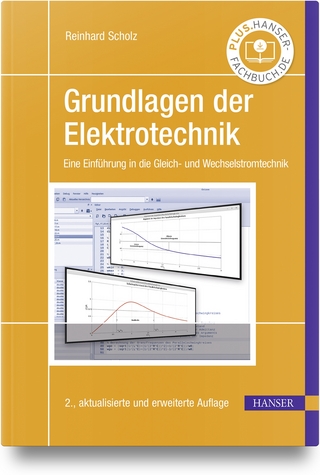
Handbook of Magnetic Materials
North-Holland (Verlag)
978-0-444-50249-0 (ISBN)
- Titel ist leider vergriffen;
keine Neuauflage - Artikel merken
This volume is composed of topical review articles written by leading authorities in the field. As in previous volumes in the series, each article presents an extensive description in graphical as well as in tabular form, placing emphasis on the discussion of the experimental material in the framework of physics, chemistry and material science. Chapter one focuses on GMR in magnetic multilayers, spin valves, multilayers on grooved substrates and multilayered nanowires. Furthermore it comprises theoretical models and employs the experimental data to discuss the current understanding of GMR and the underlying physics. A key aspect of the study of the properties of thin magnetic films and multilayers is the relationship between the structural and magnetic properties of the material, which has become one of the most active areas of research in magnetism in recent years. NMR is a well-known technique that offers the possibility to obtain experimental information on atomic scale properties in systems with reduced dimensionality. Chapter two reviews the results obtained by NMR on the latter systems. Written in tutorial style it will be helpful to scientists familiar with the preparation and properties of thin magnetic films but having little knowledge of the NMR of ferromagnetic materials. Chapter three examines rare-earth compounds with 3d transition metals, in particular those that exhibit a magnetic instability of the 3d-subsystem. It focuses on such compounds in which the d-electron subsystem is neither non-magnetic, nor carries a stable magnetic moment. The last chapter is concerned with the promising technology of magnetic refrigeration which can be used in a broad range of applications. It is based on the magnetocaloric effect associated with the entropy change occurring when a magnetic material is isothermally subjected to a changing magnetic field and the temperature change when the field is changed adiabatically. The last decade has witnessed quite a strong development in magnetic cooling technology and research activities in this field have been extended to a variety of magnetocaloric materials, including amorphous alloys, nanocomposites, intermetallic compounds and perovskite type oxides. The many materials, their magnetocaloric efficiency as well as the physical principles behind it are reviewed in this final chapter.
Professor Kurt Heinz Jürgen Buschow is a member of the Experimental Physics Department of the University of Amsterdam, where he teaches Magnetism and Magnetic Materials. He studied Physical Chemistry at the Free University of Amsterdam, starting in 1954.After having received his M.Sc. degree in 1960 he prepared his thesis work dealing with “Ion-pair Formation with Polyacene Mono and Dinegative Ions. He received his Ph.D. degree at the Free University in 1963. In 1964 he held a research position at the Philips Research Laboratories in Eindhoven. He was appointed Senior Scientist in 1976 and Chief Scientist in 1988. His research activities comprised fundamental as well as applied aspects. During this period he stayed for one year (1977) as a guest scientist at the Bell Laboratories, Murray Hill, N.Y. In March 1994 he left the Philips Research Laboratories, taking a position at the Van der Waals-Zeeman Institute, University of Amsterdam and having simultaneously a part-time professorship at the University of Leiden. His teaching activities are in the field of Metal Physics and Magnetic Materials. He has published more than 1100 papers in international scientific journals and is author of several review papers and handbook chapters on magnetic materials, metal hydrides and amorphous alloys. He is Editor-in-Chief of the Journal of Alloys and Compounds, Advisory Editor of the Journal of Magnetism and Magnetic Materials and is also Editor of the Series Handbook Magnetic Materials. Recently he became one of the Editors-in-Chief of the Encyclopedia of Materials: Science and Technology.
Preface. Contents of volumes 1-11. 1. Giant magnetoresistance in magnetic multilayers (A. Barthélémy, A. Fert, F. Petroff). 2. NMR of thin magnetic films and superlattices (P.C. Riedi, T. Thomson, G.J. Tomka). 3. Formation of 3d-moments and spin fluctuations in some rare-earth-cobalt compounds (N.H. Duc, P.E. Brommer). 4. Magnetocaloric effect in the vicinity of phase transitions (A.M. Tishin). Author index. Subject index. Materials index.
| Erscheint lt. Verlag | 19.11.1999 |
|---|---|
| Reihe/Serie | Handbook of Magnetic Materials |
| Mitarbeit |
Herausgeber (Serie): K.H.J. Buschow |
| Zusatzinfo | Indexes |
| Sprache | englisch |
| Gewicht | 1200 g |
| Themenwelt | Schulbuch / Wörterbuch ► Lexikon / Chroniken |
| Naturwissenschaften ► Physik / Astronomie ► Elektrodynamik | |
| ISBN-10 | 0-444-50249-1 / 0444502491 |
| ISBN-13 | 978-0-444-50249-0 / 9780444502490 |
| Zustand | Neuware |
| Haben Sie eine Frage zum Produkt? |
aus dem Bereich


